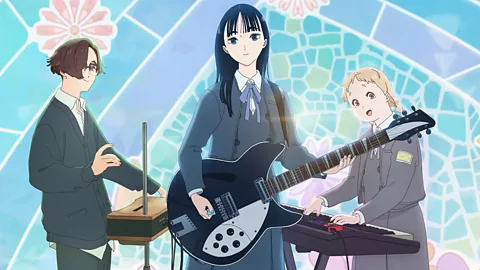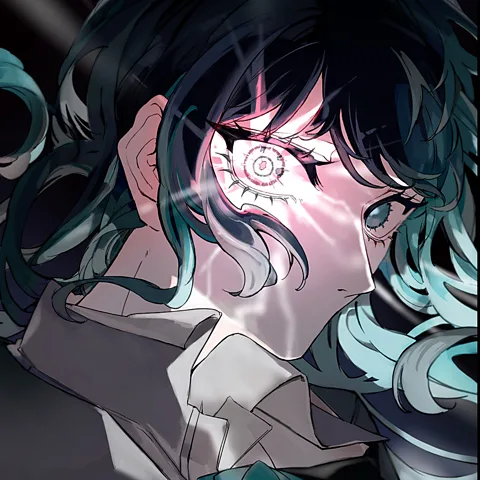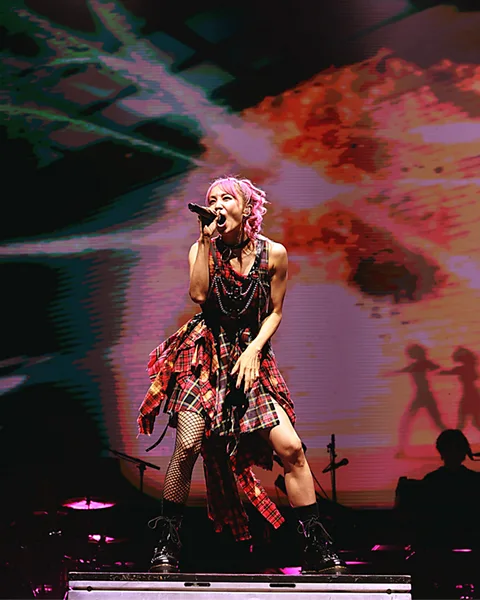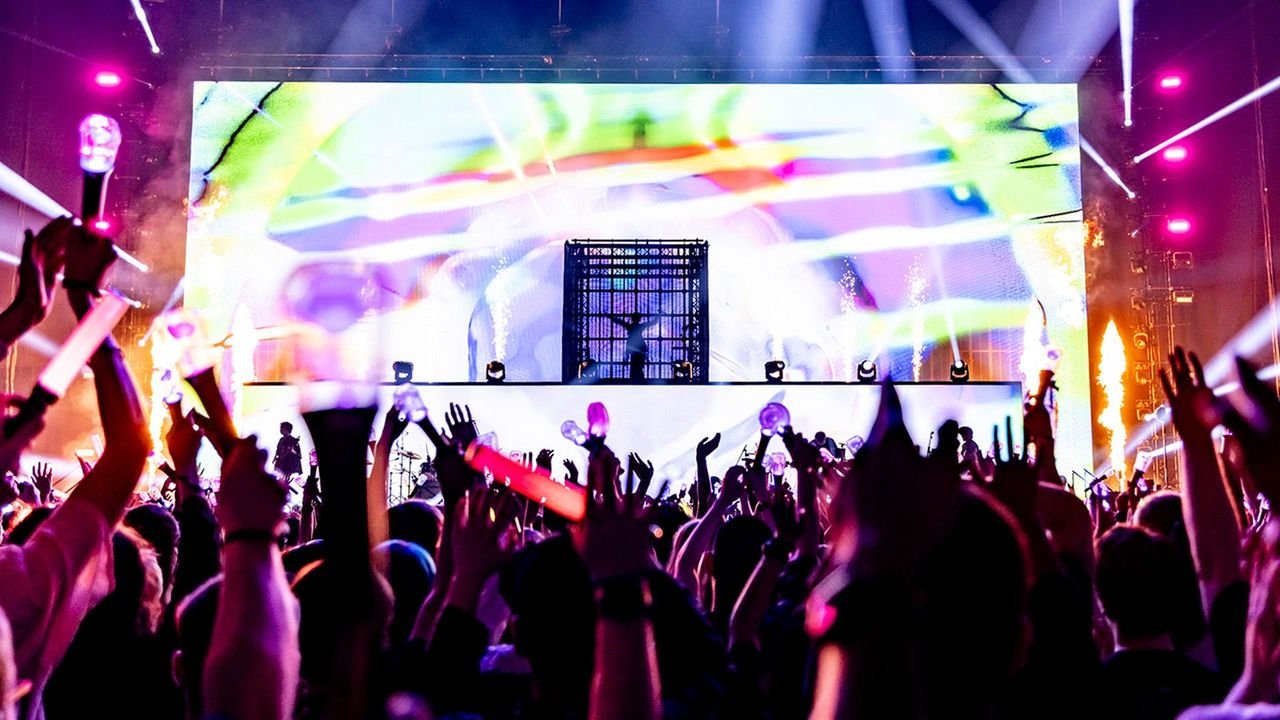Anime Songs and Gen Z: The Emotional Pulse of a Generation
In the wake of the Covid-19 pandemic, a sonic revolution has emerged—anime songs Gen Z fans love are now shaping global music trends. With unforgettable melodies and explosive emotional energy, Japanese anime music has transcended the screen, finding a powerful presence on streaming platforms, social media, and international stages. Artists like Ado, Yoasobi, and Lisa have become cultural icons thanks to their roles in anime series like Spy x Family, Demon Slayer, and Oshi no Ko.

The O2 Arena in London recently played host to 20,000 fans waving light sticks in rhythmic unison as Ado performed “Kura Kura,” a dynamic track from Spy x Family. The genre-defying sound—melding vintage pop, jazz, and operatic rock—captures everything anime music represents: unpredictability, emotional range, and an irresistible hook.
The Cultural Force of Anime Songs for Gen Z Audiences
With anime’s legacy rooted in early 20th-century Japan, its evolution has never been linear. From pirate epics to martial arts dramas, anime series span myriad genres—and their soundtracks reflect this same diversity. “Anisongs,” or anime songs Gen Z fans have embraced, are known for genre-blending, emotional depth, and narratives that deepen character arcs and strengthen viewer connection.
Streaming platforms have accelerated the spread. Between 2021 and 2024, Spotify recorded a 395% surge in global anime music streaming. Gen Z listeners—under 29—make up nearly 70% of this audience. More than 7 million anime-themed playlists now exist, driven by a generation that finds identity and inspiration through these tracks.
How Anime Songs Helped Gen Z Cope During the Pandemic Boom
During the isolation of lockdowns, anime series became more than entertainment—they offered escapism, emotional release, and cultural connection. A 118% growth in global anime content demand between 2020 and 2022 demonstrates this shift. Music was central to this engagement. For instance, Lisa’s “Gurenge”—theme to Demon Slayer—blends vulnerability and fierce resilience, resonating with fans around the world.
Viral Anime Songs Fuel a New Generation of Gen Z Global Artists
Anime has also launched a new generation of Japanese music icons into the global spotlight—especially among Gen Z audiences. Yoasobi’s “Idol,” featured in Oshi no Ko, made history as the first anime song to top the Billboard Global Chart. Creepy Nuts achieved viral fame with their Latin-inspired rap track “Bling-Bang-Bang-Born” from Mashle: Magic And Muscles, quickly becoming a favorite among fans of anime songs Gen Z audiences adore. Radwimps, known for their emotionally charged compositions in Your Name and Weathering With You, continue to receive widespread international recognition for their contributions to cinematic anime storytelling.

Ado’s meteoric rise came through One Piece Film Red, where she voiced Uta and sang “New Genesis.” With its futuristic electro-pop tone, the song became a symbol of the character’s duality—joy, sadness, and rage in equal measure.
Musical Storytelling and Character Bonding
These tracks aren’t just background themes—they’re emotional catalysts. Opening (OP) and ending (EP) songs form fans’ earliest connections to characters and narratives. The music lingers in memory, often becoming more iconic than the visuals themselves. With easy access to translated lyrics and multilingual releases, anime music fosters global empathy and immersion.
Soundtrack Craftsmanship: Behind the Scenes
Composers like Kensuke Ushio go to incredible lengths to create authenticity. For the film The Colours Within, he built a fictional garage band’s sound using real instruments and ambient recordings in Japanese halls, mirroring early New Order. This obsessive realism makes anime music feel grounded, despite its fantastical context.
Anime Music’s Explosive Presence On Stage
The leap from animation to arena has been seamless. Iconic composers like Joe Hisaishi tour globally, while newer acts such as Yoasobi and Ado pack venues from Tokyo to Los Angeles. Grassroots collectives like Anime & Chill foster inclusive club nights where fans bond over karaoke-style singalongs.

TikTok and YouTube remixes also give these songs a second life. Songs like “Idol” or “Gurenge” get reimagined by piano prodigies and dancers, making once-niche anime tracks part of daily music culture. Club-goers scream lyrics, embodying characters with emotional intensity.
Western Artists Join the Anime Revolution
Influences go both ways. Artists like Billie Eilish, Megan Thee Stallion, and Lil Uzi Vert reference anime in lyrics and visuals. UK indie rapper Shao Dow creates tracks rooted in anime storylines, channeling his admiration for characters like Luffy from One Piece, who never gives up despite ridicule.
Nostalgia Meets New Discoveries
Anime music bridges generations. Parents and children bond over shared playlists. For Gen Z and Gen Alpha, it’s a gateway to explore Japanese culture, language, and storytelling. For older fans, it reignites childhood joy.
Why Anime Music Resonates Deeply
What sets anime songs apart is their visceral honesty. They don’t shy away from extremes—tragedy, hope, joy, and heartbreak collide in every chorus. This rawness is what makes Gen Z scream the lyrics—it’s music they feel, not just hear.
The Future of Anisongs
As anime production expands globally, so will its music. With dedicated streaming channels, international tours, and cultural crossover projects, anime soundtracks are becoming pillars of global pop culture. And Gen Z isn’t just the audience—they’re the curators, remixers, and next generation of creators.




